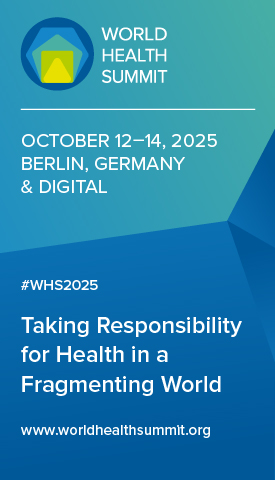Trust during pandemics: a critical determinant of successful response
Public trust in health authorities is essential when it comes to the rapid, effective behaviour adaptations that may be required in the face of an epidemic or pandemic – and several factors can facilitate a high-trust environment
Epidemics and pandemics are characterised by high levels of social and economic disruption. They can destabilise the health sector due to the rapid demand for care and generate fear and uncertainty that can affect the entire social fabric of society.
Epidemics and pandemics are dynamic crises and non-linear in nature. During the Covid-19 pandemic, changes in the
virus produced different variants that were associated with ‘pandemic waves’.
To control epidemics and pandemics, people must adopt temporary new behaviour such as wearing masks, getting vaccinated and self-isolating when symptomatic. It may also be necessary to change the recommended behaviour during the event in response to emerging knowledge about the disease or the risk associated with it or as medical interventions become available. The constant need for individuals and institutions to adapt to changing risks contributes to higher levels of uncertainty during epidemics and pandemics and the risk of further destabilisation of existing systems.
To ensure rapid behaviour change, the population must trust that the recommendations from the health authorities are relevant, commensurate with the risk and are ultimately to protect their health. Trust in health authorities is therefore an essential component of an efficient and successful epidemic or pandemic response.
But trust can be lost easily during a crisis. Many health authorities tasked with managing the Covid-19 pandemic response experienced a loss of trust. This reduced people’s tolerance of the recommended measures and their compliance with those measures, thereby reducing their effectiveness and further affecting levels of trust in the health authorities. Once this cyclical nature of mistrust starts, it is difficult to counter.
Fostering trust in health authorities to enable a successful epidemic or pandemic response requires efforts and investments prior to the crisis. It is difficult to build trust during a crisis, so these efforts should be embedded within pandemic preparedness planning. It is standard practice for countries to strengthen their surveillance system, their vaccine manufacturing system, their health system – and more – as part of their preparedness efforts; however, the trust component is often not considered, despite its potential for increasing the ‘return on investment’ in standard pandemic preparedness capacities. Unprecedented efforts to develop and produce a vaccine for Covid-19 were marred by widespread mistrust in many parts of the world. This mistrust has crept into vaccination in general and now vaccine-preventable diseases are re-emerging in some places.
Influencing factors
Several factors can facilitate a high trust environment.
First, the uptake of public health and social measures depends upon the degree to which the population understands them; the relevance of these measures to the population and the perceived risk; and the feasibility of implementing the measures in different settings. It is therefore important to ensure that people understand the scientific rationale behind these measures, through effective science communication – an important strategy to build trust during crises. Effective science communication includes messaging that resonates with and responds to people’s concerns. To enable this, it is critical to listen in real time to people’s concerns and questions through both online and offline social listening. Tools such as Early AI-supported Response with Social Listening – EARS – have been developed to enable health authorities to analyse social media conversations while respecting individual privacy and ethical principles. Social listening can expose topics of interest and sentiments associated with conversations such as anger or anxiety. If anxiety emerges as a dominant sentiment, health authorities can respond with reassuring messaging that addresses uncertainty and concerns. This approach is more effective in promoting uptake of public health and social measures and in increasing trust in the health authority’s capacities to manage the crisis.
Second, it is crucial to understand and effectively navigate the dynamic information ecosystem that continues to change with the technological revolution and the expansion of social media platforms. More than 50% of the world’s population uses the internet and each individual is part of multiple communities existing in both a digital and a physical world. Health authorities need to understand these digital communities and the way information, including mis- and disinformation, spreads. This understanding will inform the adaptation of crisis communication to the complexity, norms and rules of the new information ecosystem, including the adaptation of messages to new formats and a different speed and frequency of communication.
Third, in the context of epidemics and pandemics, scientific knowledge constantly evolves, rendering science translation an extremely challenging task. As new evidence about the disease or virus surfaces, recommendations may need to be changed and public health and social measures revised. If these changes are not accompanied by clear, transparent communication and the uncertainty surrounding the evidence not acknowledged, then trust in science and in the scientific process of knowledge generation may be undermined.
Fourth, it is critical for health authorities to understand the culture and values of communities and to acknowledge the heterogeneity within national contexts of specific sub-cultures. Crisis communication and interventions during crises are often embedded in the predominant medical paradigm, which may be misaligned with or undermine local values and beliefs. Meaningful dialogue can foster mutual understanding and respect between the health authorities and communities; in this way interventions can be adapted or co-developed to accommodate different cultures and settings. This will make it easier to maintain trust during crises.
Fifth, in most parts of the world, healthcare workers are seen as trusted figures, with the legitimacy and responsibility to protect people’s health. However, in many health crises, this trust-building function of healthcare workers is neither leveraged nor capacitated. Healthcare workers require additional training, encouragement and recognition to deliver on this additional function and responsibility.
At the end of the acute phase of the Covid-19 pandemic, a period to reflect on the importance of trust in epidemic and pandemic preparedness and response is needed. Efforts commensurate with the importance of trust are required to build capacities to increase and maintain trust as an essential component of future pandemic response.












